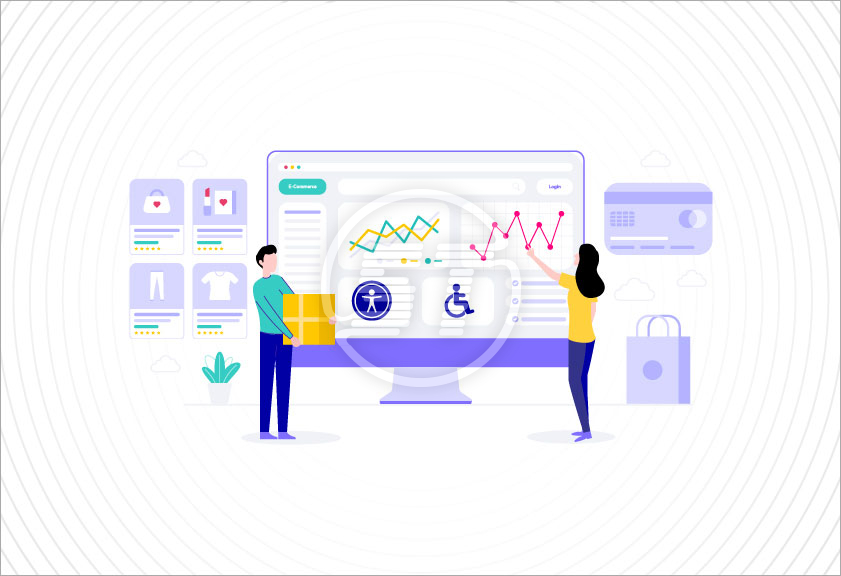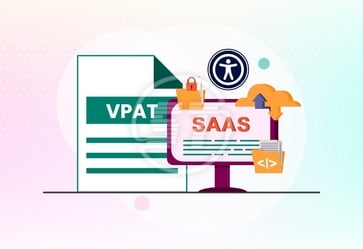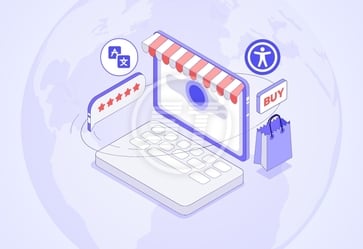In the rapidly moving and growing world of online retail, accessibility is often treated as a compliance checkbox rather than a strategic priority. However, web accessibility monitoring isn’t just about inclusivity, it’s a critical revenue-saving strategy for ecommerce and other businesses.
If ecommerce businesses aiming to reach a wider audience, mitigate legal risks, and build lasting customer loyalty, proactive accessibility scanning and monitoring is a game-changer.
Accessibility Monitoring: Brief!
Accessibility monitoring refers to a regular process of testing and reporting how accessible a website or digital product is to users with disabilities. The process involves automated tools’ testing, manual testing, and user feedback to identify barriers that prevent people with vision, hearing, mobility, or cognitive impairments from fully interacting with the online store.
This isn’t a one-time audit – it’s a continuous practice that evolves as a website grows.
Benefits of accessibility monitoring: Why ecommerce must invest in right monitoring services!
Expands customer base
According to the World Health Organization, over 1 billion people globally fall in the disabled category. In the U.S. alone, people with disabilities control over $500 billion in disposable income. If an ecommerce platform isn’t accessible, it is losing a huge amount.
How accessibility monitoring helps:
- Ensures that periodic updates or new product pages don’t introduce new accessibility barriers.
- Maintains a site usable for screen readers, keyboard navigation, and other assistive technologies.
- Builds a consistent and inclusive user experience, increasing conversion rates.
Prevents revenue loss due to cart abandonment
If a user with low vision trying to purchase a product but unable to read the button labels or navigate the checkout process. They won’t just abandon the cart – probably they never return to the website.
Common accessibility issues that hurt revenue:
- Inaccessible forms or payment gateways.
- Non-descriptive links and buttons.
- Poor color contrast affects readability.
Monitoring can identify these issues early. Preventing friction and reducing bounce and abandonment rates.
Protects against legal risks and costs
Accessibility lawsuits against ecommerce companies are on the rise. A non-compliant website can lead to hefty fines, settlements, costly redesigns under legal pressure, and damage to brand reputation.
Proactive monitoring helps to:
- Stay compliant with WCAG's latest updates.
- Document accessibility efforts to demonstrate commitment towards accessibility.
- Reduce the chance of litigation through early detection.
Reduces technical debt
Accessibility issues, if they left unchecked, pile up just like bugs or performance bottlenecks. Fixing them retroactively can be time-consuming and expensive.
Monitoring accessibility as part of the organization’s code integration and development (CI/CD) pipeline:
- Flags issues during development, which is the right time to fix the problems.
- Saves developer hours by integrating fixes early.
- Prevents compounding errors that harm UX and SEO.
Enhances SEO and mobile usability
Many accessibility improvements - such as semantic HTML, alt text for images, and seamless navigation – also improve SEO. Google favors websites that are structured well for all users, including users with assistive needs.
Accessibility monitoring ensures the site remains:
- Crawlable and understandable to search engines.
- Mobile-friendly, since many accessibility features overlap with mobile design best practices.
Read about ecommerce accessibility audit: Ecommerce UX and accessibility audit
Tools for ecommerce accessibility monitoring
To maintain required conformance level of accessibility, combine automated tools with manual testing and real-user feedback.
Automated tools – like Accessibility Scanning Monitoring, Free Accessibility Checker, Lighthouse, etc. – are best for identifying all accessibility issues and monitoring websites regularly.
Manual testing to test keyboard navigation, screen reader simulation, form testing, etc.
User feedback to conduct usability testing with users with disabilities.
Also, include accessibility checks in the QA process, train teams on accessibility practices, and run regular scans.
Let’s learn more about Accessibility Scanning & Monitoring tool
This tool scans, monitors, and identify entire website’s accessibility against WCAG 2.0, 2.1, and 2.2 conformance along with several other crucial international laws such as EN 301 549, Section 508, Australian DDA, Canada ACA, and many more. It is a best solution for every size of ecommerce business, enterprise, and government websites.
Development agencies and digital marketing professionals can also use the Accessibility Scanning & Monitoring tool to help their clients meet their accessibility goals and enhance their business revenue.
It has various packages that organizations can opt as per their requirements.
Its exclusive features are:
- 10 days free trial
- Flexible subscription
- Sitemap based monitoring
- Auto-generated scan reports and many more.
(Also, read about accessibility implementation/remediation widget All in One Accessibility.)
In a nutshell,
Accessibility scanning & monitoring is crucial because it’s a revenue-saving, risk-reducing, brand-enhancing strategy for ecommerce. In the competitive business space, where user experience is everything, ensuring that everyone can shop, navigate, and checkout with ease is simple yet effective step.
By making accessibility monitoring a continuous part of business digital strategy, organizations can future-proof their websites, reach untapped markets, and show that their brand values every customer without exception.
Discover how accessibility monitoring can turn compliance into a competitive edge for your ecommerce business. By identifying and fixing barriers, improve the user experience for everyone — boosting conversions, reducing legal risks, and protecting your revenue. Stay ahead of evolving regulations and customer expectations with us. Reach out hello@skynettechnologies.com and start monitoring to unlock the true value of digital inclusivity!


